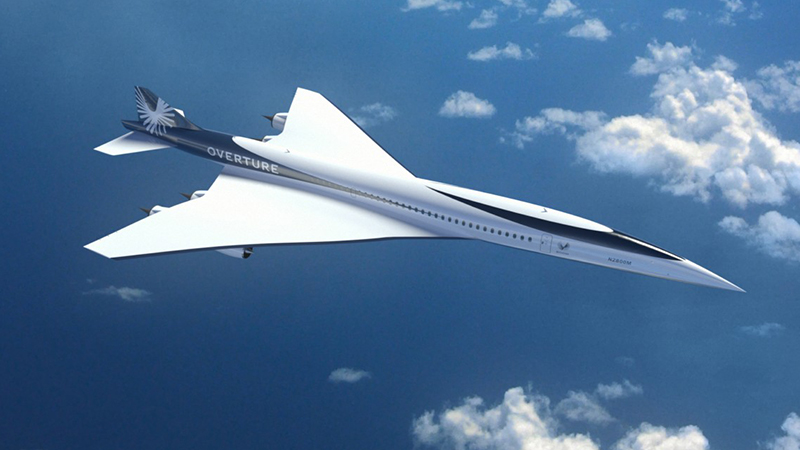

Image Courtesy: Boom Supersonic
Although Concorde was the first supersonic passenger aircraft, project delays and cost overruns – combined with a decrease in passenger interest – led to its early retirement in 2003. Nonetheless, it remains one of the most iconic aircraft in history.
Recently, there has been renewed interest in the idea of supersonic air travel, with numerous companies developing new interesting aircraft in the niche. Let’s look at what they can offer, along with the benefits and potential drawbacks of supersonic flight.
The forerunner in the supersonic passenger jet market is the Overture, developed by Boom Supersonic. The jet will feature the company’s Symphony Engine, which is compatible with sustainable aviation fuel (SAF) and provides 30,000 lbs. of thrust.
It’ll be capable of Mach 1.7 at cruise speed, which is marginally slower than Concorde’s Mach 2.04. However, it’s double the speed of current airliners and can make the journey from London to New York in a mere three and a half hours (usually seven hours).
Perhaps the biggest game-changer is that the Overture will be net-carbon neutral by 2025, well before its planned first flight in 2027. Boom plans to achieve this by combining SAF with sustainable production methods.
Numerous large airline companies have already placed orders for the Overture, including American Airlines, United Airlines, Virgin Atlantic and Japan Airlines. Their combined orders come to around 150 aircraft, which is impressive considering the Overture won’t reach public service until 2029.
From a passenger perspective, the most apparent benefit of supersonic travel is less time in the air. The ability to complete an international flight in half the normal time is a clear advantage for business travellers more than tourists, but its convenience will likely have a trickle-down effect for the rest of the industry.
Aside from more time spent at the traveller’s destination, shorter flight times open up a greater range of journeys in the global market. In fact, it could create new global markets by connecting people much faster than what we’re currently used to. While it’ll take some time to reach this stage, it could have massive knock-on effects on how we do global business.
In Concorde’s day, fuel efficiency was a major drawback. It maintained an average efficiency of 16.7L/100km per passenger, which was significantly worse than subsonic aircraft. However, Boom will clearly overcome this by using SAF and net-carbon-neutral production. While fuel efficiency still matters, emissions are far less of a concern.
Similarly, Concorde was plagued with issues including decreased passenger comfort and far higher noise emissions than subsonic aircraft. Again, Boom is addressing these issues, as its engine uses a singles-stage fan to reduce noise, and the cabin is insulated. Boom has made its Symphony engine compliant with new Chapter 14 noise standards, which is a major selling point for a supersonic aircraft.
Whether supersonic travel becomes the future of international flight remains to be seen. Boom is clearly developing an exciting product that has the power to revolutionise how we think about air travel. Importantly, it’s addressed Concorde's potential downsides and public concerns to design an aircraft that’s sustainable and convenient for both passengers and people on the ground.
